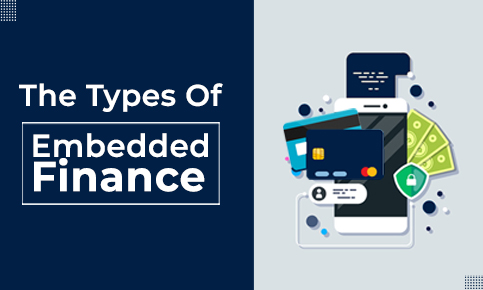The understanding and implementation of technology in various aspects has allowed us to transform how we perform financial tasks. Today, we can initiate a number of financial tasks at a click! And, it only gets innovative as we delve deeper. Finance is no longer associated with ‘banking’ only rather, several businesses are offering it as an extension to their existing service stack, referring to it as Embedded Finance.
Embedded finance is the integration of financial services into a traditionally non-financial platform. This integration allows customers to access financial services, for instance- payments, within the service app. Earlier, if a non-financial business would want to offer a financial service, they would’ve had to build a corresponding financial arm with their organization. Today, with the help of embedded finance, all it takes is integration thereby, lowering expenditure significantly.
Embedded finance has enabled businesses to increase their customer lifetime value by offering them a complete journey on a single platform while diversifying their product stack. As per Bain Capital, embedded finance has the potential to become a USD 7+ trillion dollar market, while also being referred to as the ‘fourth platform’. The given target does not seem unattainable since Embedded finance has branched out to various types. Here are a few examples of businesses that have adopted Embedded Finance-
Examples of businesses that use Embedded Finance
| Type of Embedded Finance | Business |
|---|---|
| Embedded Payments | Zomato, Uber, Big Basket |
| Embedded Lending | Croma, Amazon, Flipkart |
| Embedded Investments | Zerodha |
| Embedded Insurance | BMW, Honda, Tata |
- Embedded Payments- This is used while buying a product or availing a service through a non-financial business. The check-out and payment settlement process is now a part of the platform rather than an extension. Severalbusinesses also offer Embedded Card Payments, also known as smart cards, virtual cards, or expense cards, that allows an individual to transfer cash electronically.
- Embedded Lending- Non-Financial businesses offer loans with a credit limit at the time of purchase which otherwise, was a lengthy process. Buy now, Pay Later is an appropriate example to explain embedded lending, quickly and seamlessly.
- Embedded Investments- Embedded investments enables investment by offering users a single platform to invest and manage their money. It allows users to invest in various financial offerings like capital market, mutual funds etc without leaving the existing platform.
- Embedded Insurance- Businesses collaborate with external insurance companies rather than introducing an in-house product or service. Insurance companies integrate transactional APIs and technologies into their insurance solutions to provide service on mobile apps, websites and other partner ecosystems.
- Embedded Banking- It is when services similar to what banks provide are offered by non-financial players, apart from critical offerings restricted to banking institutions only. It allows you to make investments, apply for loans, manage your transactions etc., on its platform.
Embedded finance is enabling companies to widen their demographics while offering an end to end solution on a single platform. Businesses from various domains are adopting embedded finance to stay ahead in their area of competition.
